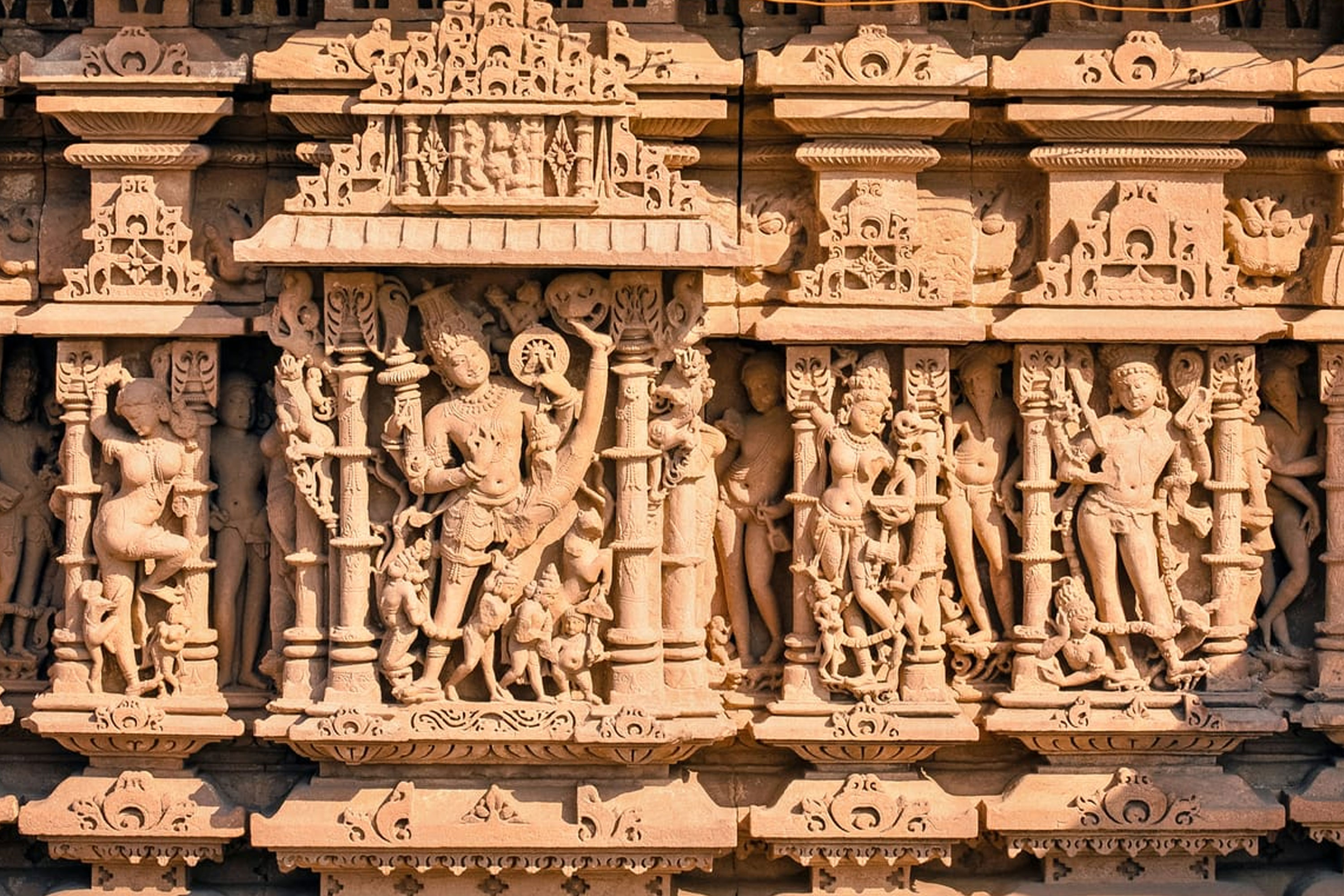
Osian is a small village 65 km (40 miles) north-east of Jodhpur. It is an important Jain pilgrimage center for the Oswal Jain community. The (Mahavira) Temple, built here in A. D. 783, is an important tirtha for Jains built by Pratihara King Vatsa raja. The Jain Harivamsa Purana refers to Vatsa raja's rule in Saka year 705 (A. D. 783). It is believed that he was highly influiential in Upakesapura (Osian), as inscriptions of Vikram Samvat dating back to 1013 (A. D. 956), and refering to this place, have been found.
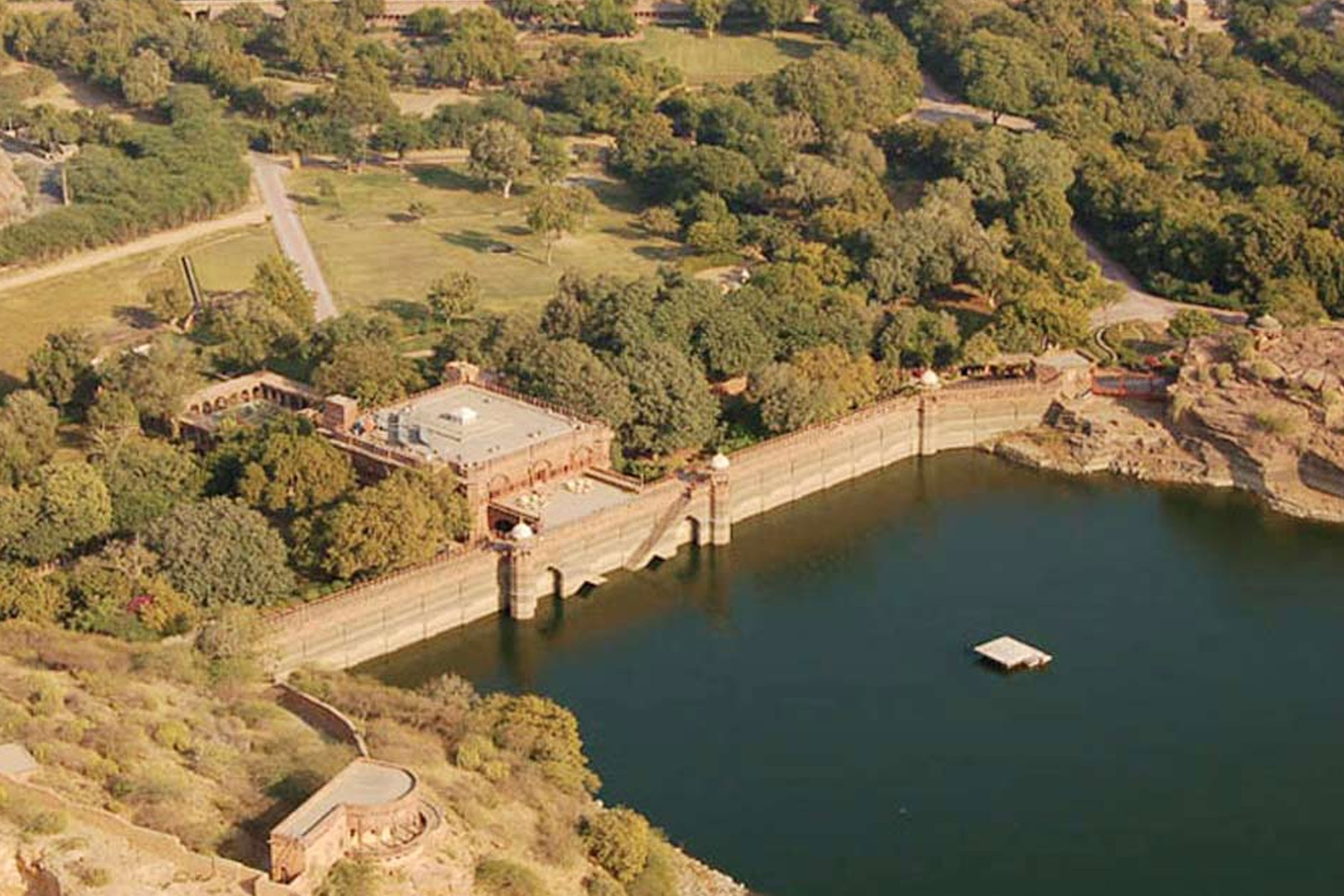
The site Heritage Hotels of Rajasthan offers you details regarding hotel booking and online hotel reservation at the Balsamand Lake Palace heritage hotel located in Jodhpur in Rajasthan, North India.
Balsamand Lake Palace heritage hotel in Jodhpur, Rajasthan, North India is a perfect example of traditional Rajputana architecture.
The Balsamand Lake Palace heritage hotel has been completely built out of the characteristic Jodhpur red sandstone structure. This lovely heritage hotel is surrounded by lush green and manicured gardens that add a dash of charm to this heritage hotel's aesthetic attractiveness.
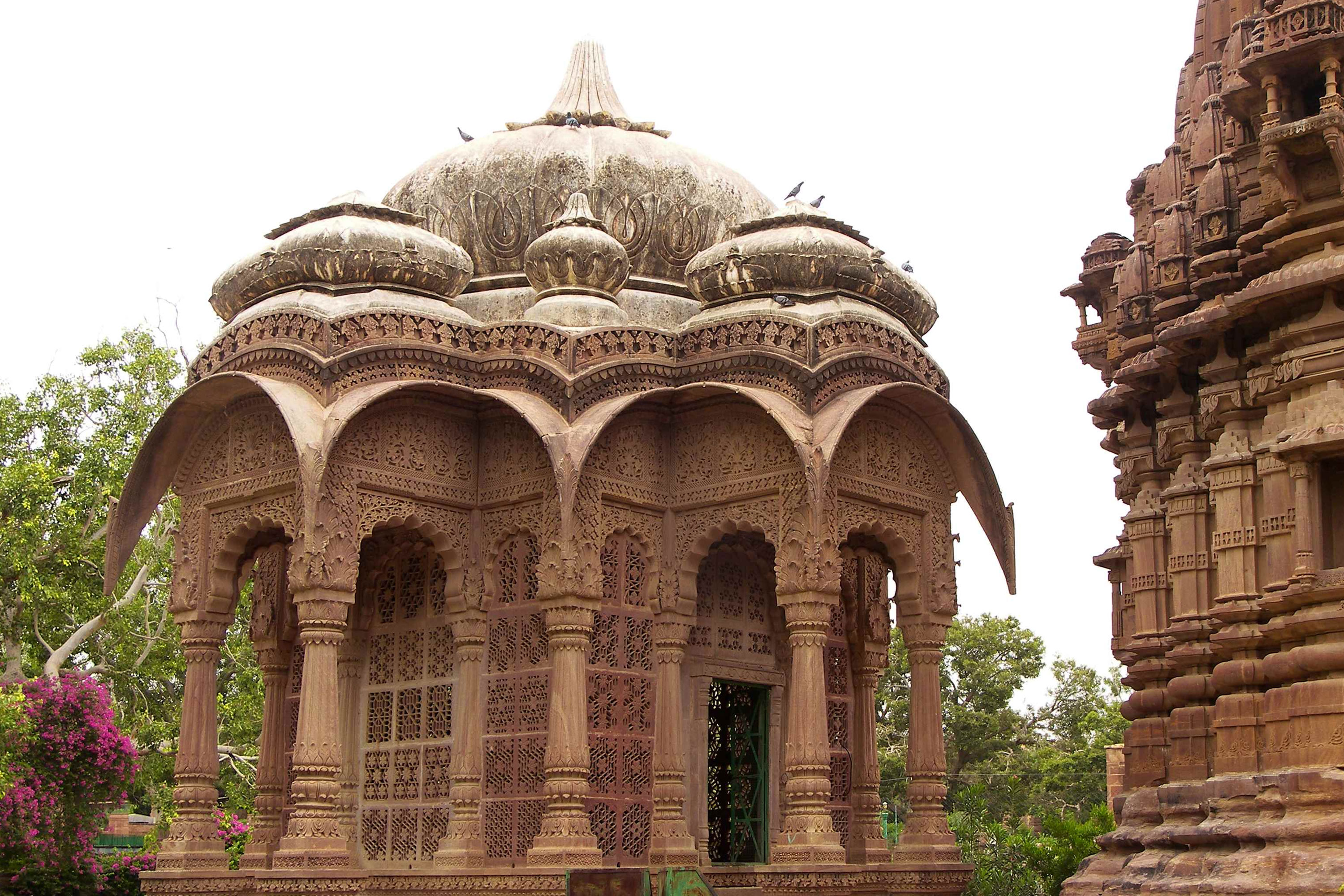
Mandore, 9 km to the north of Jodhpur, was the capital of Marwar before the foundation of Jodhpur. It was founded in the 6th century, and passed to the Rathore Rajputs in 1381 after a marriage alliance between a princess of the original founders, the Pratiharas, and the Rathode Raja, Rao Chandor. Today the main attraction here is the far-reaching Mandore gardens with there high rock terraces. The gardens also contain the chhatries (cenotaphs) of the Rathode rulers. One of the most imposing is the Cenotaph of Maharja Dhiraj Ajit Singh, an enormous edifice with carved elephants, amalake (disk-shaped flourishes with fluted edges), a pillared fore chamber with fine sculpture. You can climb to the third storey up a peculiar set of staircases. Opposite is the 17th century Chhatri of Maharaja Dhiraj Jaswant Singh, an enormous octagonal pavilion with a vast dome and huge pillars. It achieves a remarkable symmetry, with a gallery supported by pillars and sculptures of Krishna and the gopies (milkmaids).
At the rear of the complex, to the right is the small government museum. To the left is the Hall of Heros, with 15 figures carved out of a rock wall. The brightly painted figures represent Hindu deities or local Rajput Heroes on horseback. The Shrine of 33 Crore Gods is painted with figures of deities and spirits.
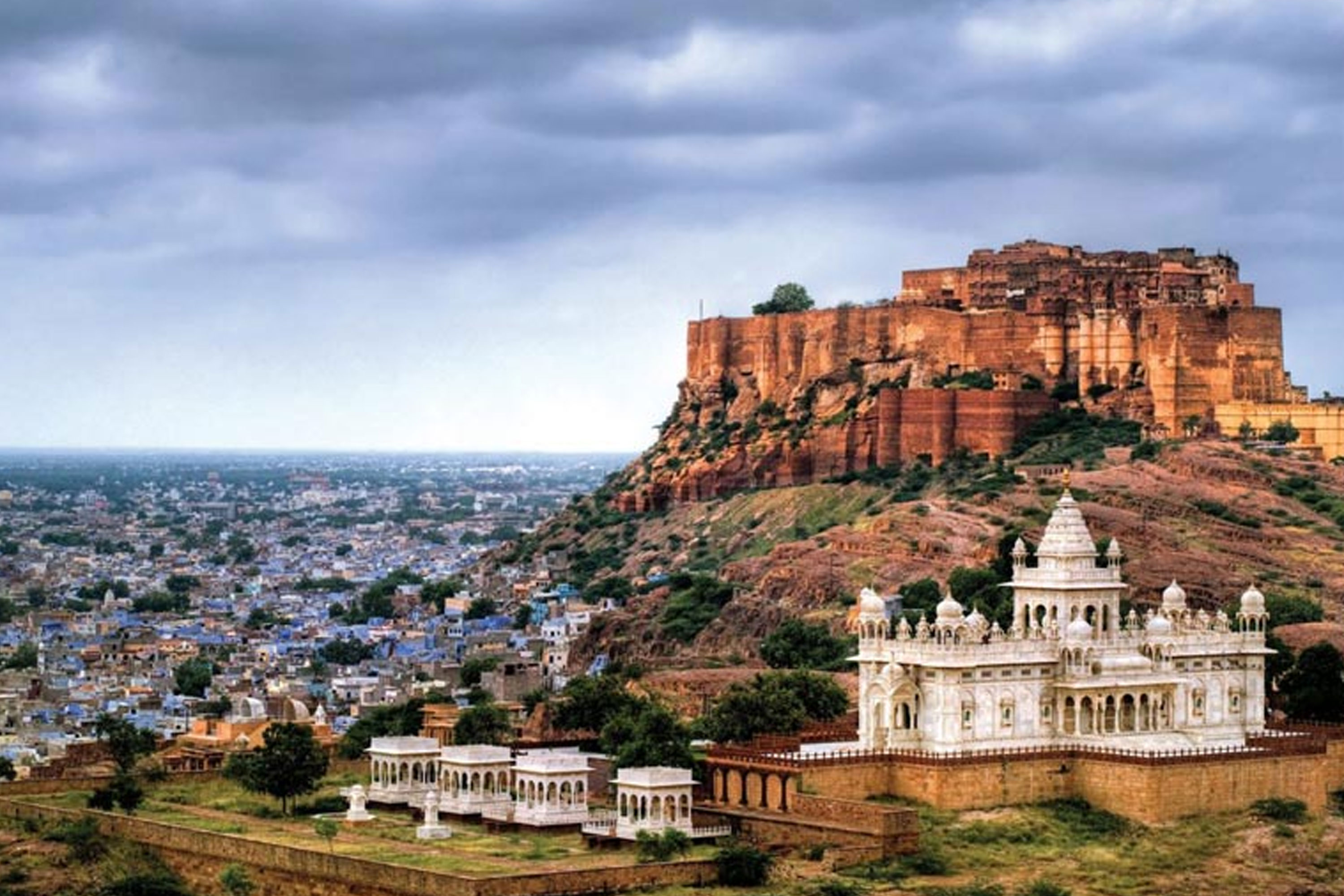
Mehrangarh Fort, located in Jodhpur city in Rajasthan state is one of the largest forts in India. The fort is situated on a lofty height, 400 feet (122 m) above the city, and is enclosed by imposing thick walls. Inside its boundaries there are several palaces, which are known for their intricate carvings and sprawling courtyards. A meandering road leads to and from the city below. Battle scars of canon ball hit by attacking armies of Jaipur can still be seen on the second gate. To the left of the fort is chhatri of Kirat Singh Soda, a soldier who fell on the spot defending the Mehrangarh fort. There are seven gates, which include Jayapol meaning victory built by Maharaja Man Singh to commemorate his victories over Jaipur and Bikaner armies. Fattehpol also meaning victory gate was built by Maharaja Ajit Singh to mark the defeat of Mughals. The palm imprints still attract devotional attention and are covered by vermilion paste and paper-thin silver foil.
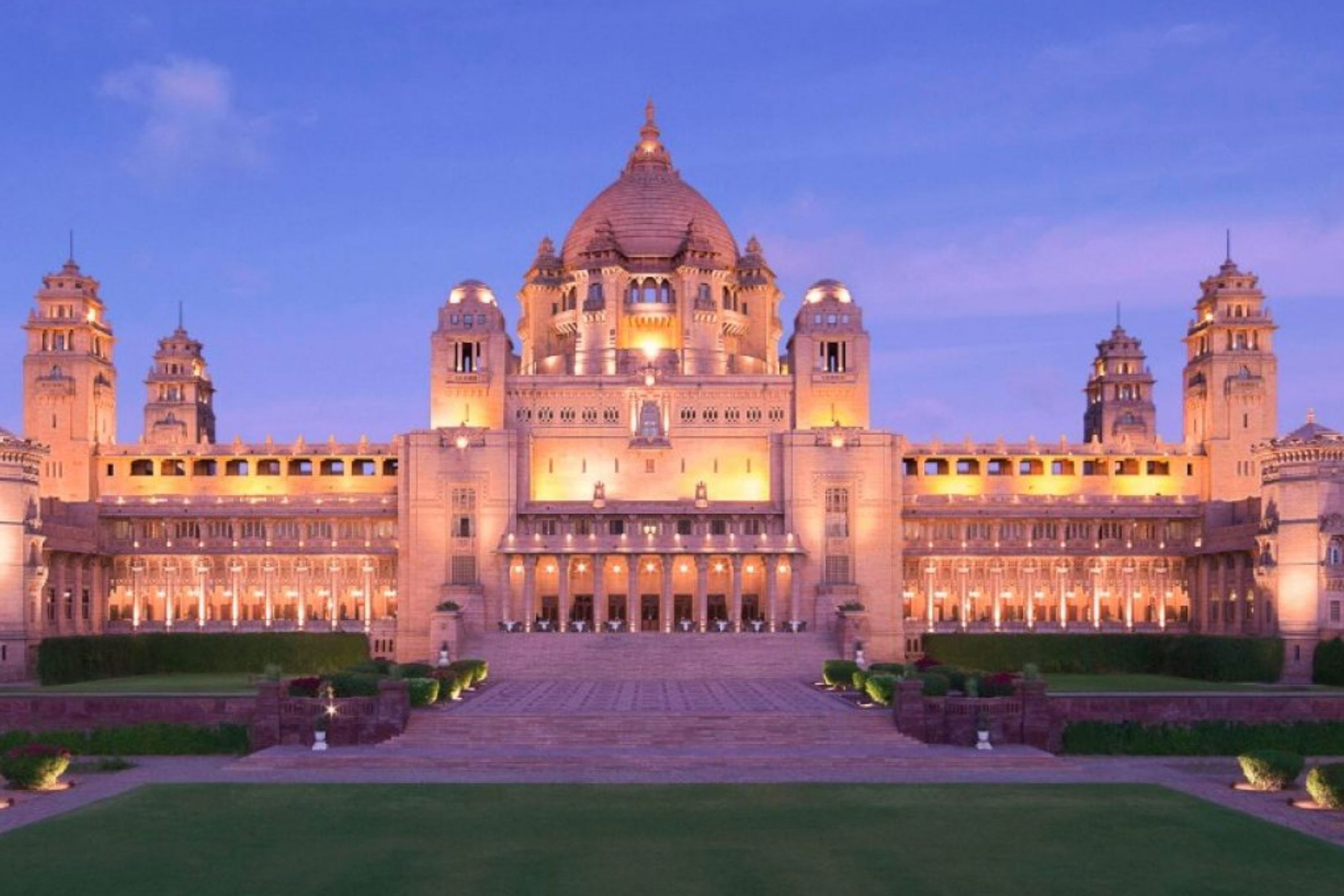
Umaid Bhawan Palace can qualify for several firsts: the largest private residence in the world, the finest extant example of art-deco, the only palace to have painting from the Ramayana painted by a Polish artist, the first to use air-conditioning, electricity and elevators, and the most impressive for its size and dimensions.